
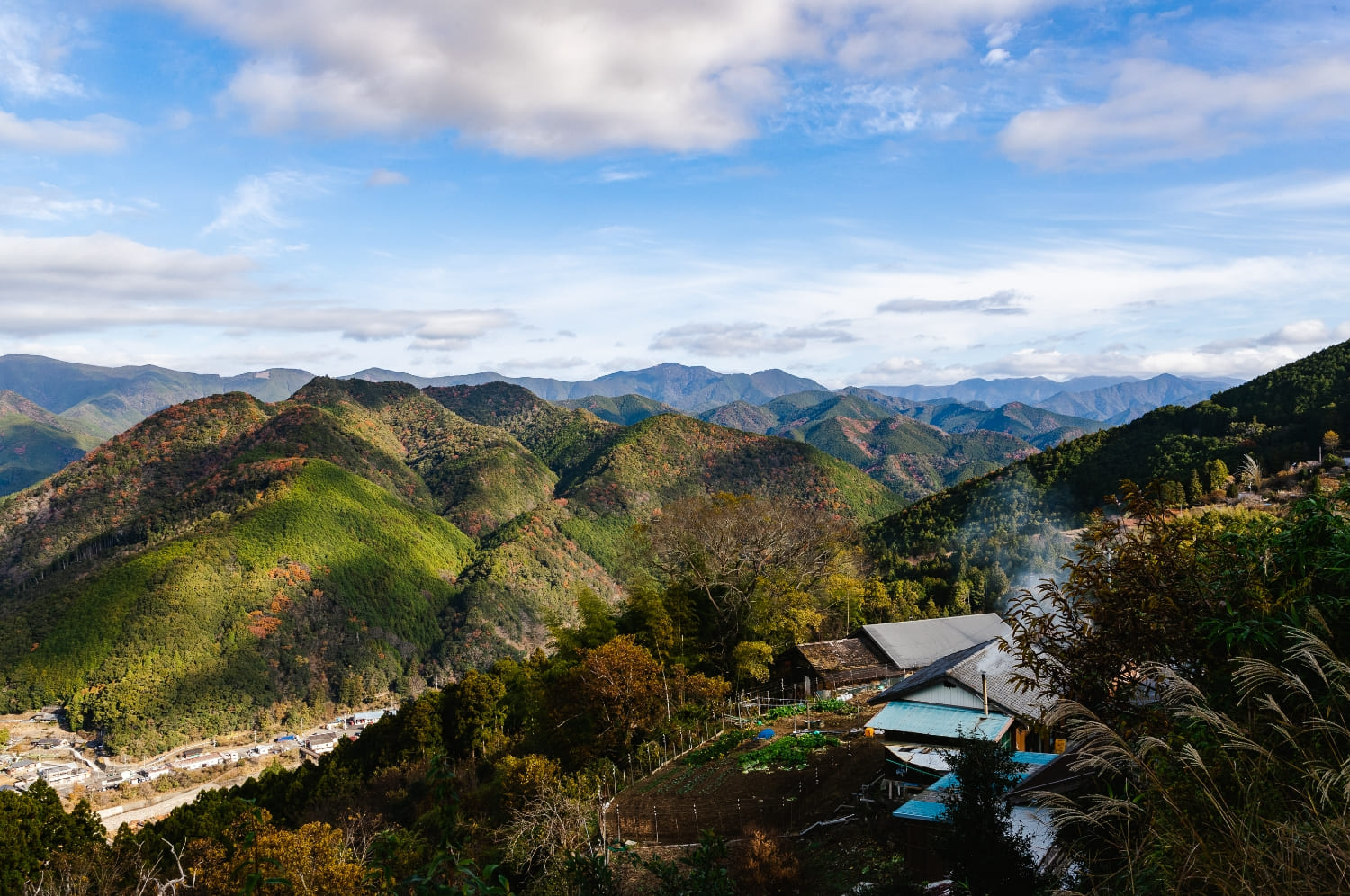
Must visit at least once! A thorough introduction to a model course that takes in the sights on the Kumano Kodo!
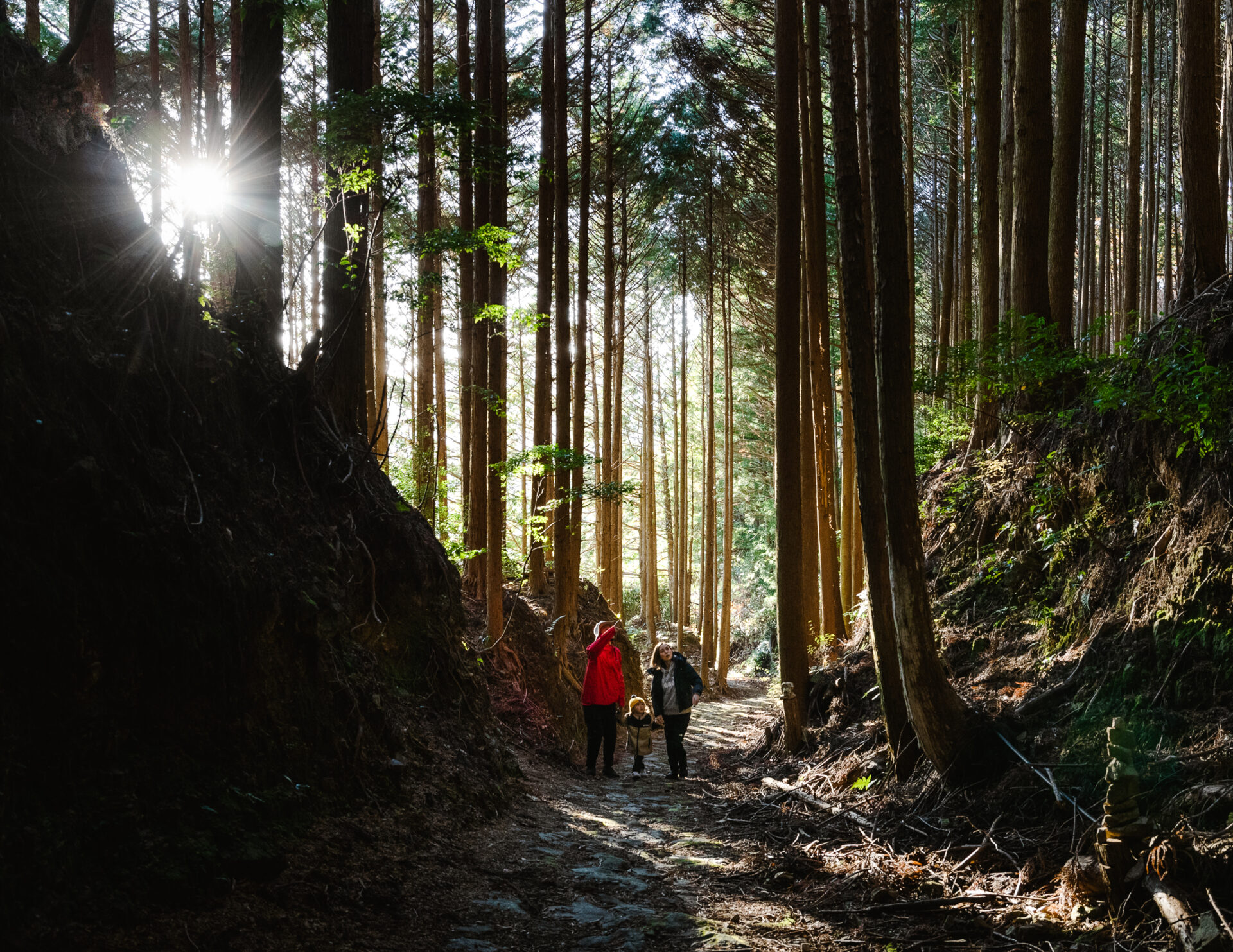
The Kumano Kodo is one of only two ‘roads’ in the world registered as a World Heritage Site. Straddling Wakayama, Mie, Nara and Osaka prefectures, it is approximately 600 km long and offers a variety of routes and tourist attractions. Even if you want to visit the area for sightseeing, it can be difficult to choose where to visit and which route to take.
In this article, we introduce a recommended trekking model course that takes you to some of the best spots to visit along the Kumano Kodo.
Three recommended Kumano Kodo trekking routes.
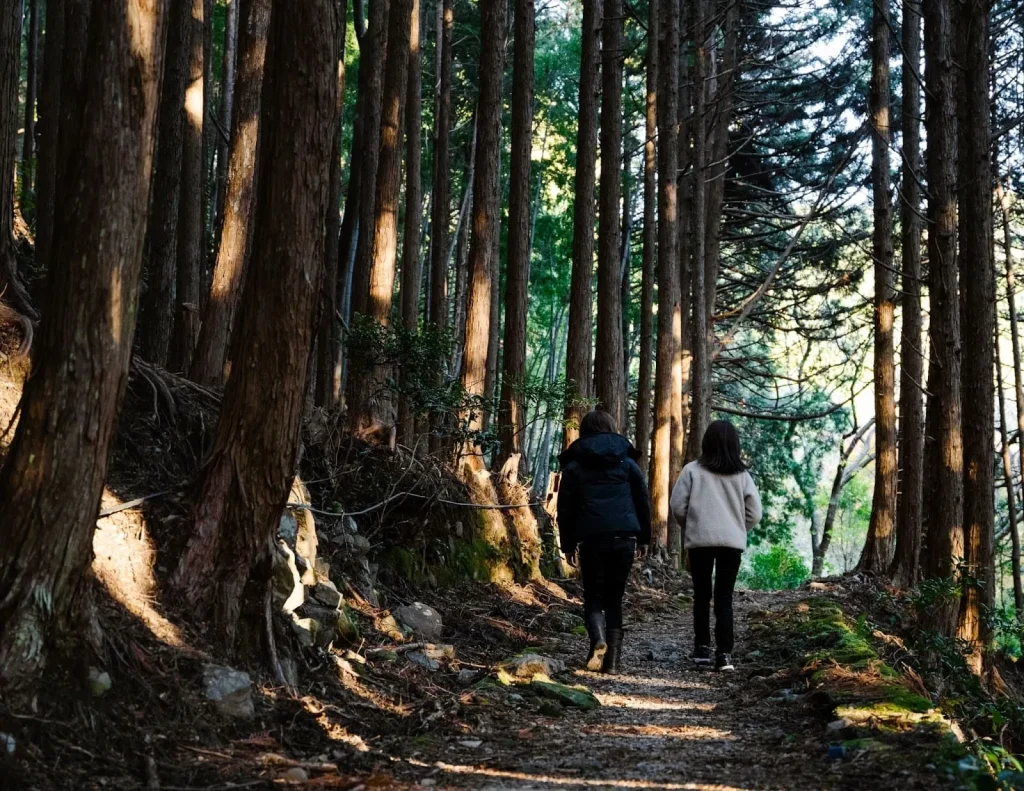
The Kumano Kodo is home to three shrines known as the ‘Kumano Sanzan’, and since ancient times many people have made pilgrimages to these three Kumano mountains.
Various paths are spread out around these three Kumano mountains, including flat paths, paths with steep inclines, paths with a view of the sea and paths with historical buildings. We recommend routes for each of the points of interest you should focus on when sightseeing!
Feel the history of the Kumano Kodo|Koyasan – Kumano Hongu Taisha shrine

There are five main routes on the Kumano Kodo, of which the Kohechi route connects Koyasan with Kumano Hongu Taisha, one of the three Kumano mountains.
Koyasan was founded by Kobo-Daishi Kukai at the beginning of the Heian period (794-1185). Kongobuji Temple is well known, but Koyasan is a ‘one mountain precinct’, meaning that the entire mountain is considered a temple. The route introduced here starts at Koyasan, walks along the Kobeji Road and heads for Kumano Hongu Taisha shrine.
The route from Koyasan to Kumano Hongu Taisha is divided into three sections. Day-trippers and those who are not confident about their physical fitness are recommended to walk only the Koyasan – Mizugamine route, which is introduced first.
Koyasan – Mizugamine (Omata) route
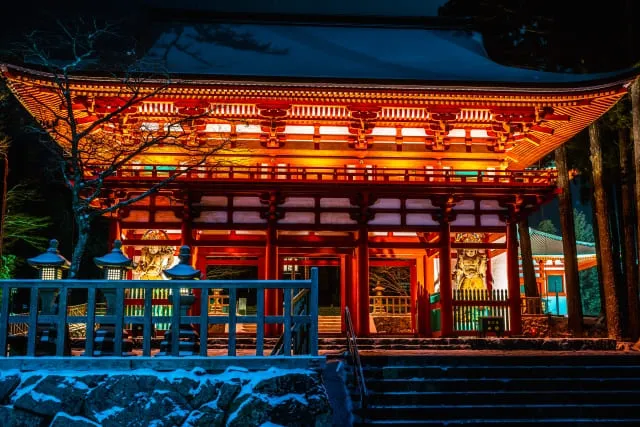
The Kobeji route connects the three Kumano mountains from Koyasan in the shortest possible distance, but it is therefore a steep route as it traverses mountains in the 1000 m range.
However, the route from Koyasan to Mizugamine is relatively easy to walk, with few ups and downs. It is the perfect course for walking while feeling the history.
If you want to feel the history even more, it is recommended to stay overnight in Koyasan. Koyasan has more than 50 shukubo (lodging houses for monks and worshippers), where you can enjoy vegetarian cuisine and the colourful nature of the gardens. Some shukubo also offer onsen (hot spring baths). It is recommended to experience the culture of temples and shrines.
The next day, leave Koyasan and head first for Rokuro Pass. Near the Rokuro Pass is the Otakiguchi Women’s Hall Ruins, which is also worth checking out. It is a gentle ascent to this point.
From there, a gentle 2 km walk takes you to Susukitoge. After about an hour and a half’s walk, you will arrive at Otaki village. Pass by private houses and take the mountain path.
From here it is uphill again. There are rest stops along the way, so take a break and continue climbing. The road joins a mountain road called the Koya Ryujin Skyline, so be careful of traffic.
The goal is reached at the Nosakogawa Village Information Centre! From here, take the bus home. The journey to Koyasan takes about 35 minutes by Nankai Rinkan Bus.
Duration.
Approx. 4.5 hours
Distance.
Approx. 11.3 km
Difficulty level
★★☆☆☆
Mizugamine – Miuraguchi – Yanagimoto Bridge
From here, the route crosses two 1000 m passes (Haboko Pass and Miura Pass) and heads towards Totsukawa Onsen. The journey takes approximately 17.5 hours and requires three days and two nights to walk from Koyasan, but it is a great route to enjoy the unspoilt nature of the area. Why not step onto the paths walked by the Shugenja in the past, in the era of the 2025s?
From Mizugamine, follow the signposts along the Kobenji Road that read ‘To Omata’ to the forest path, which continues downhill for about 1 hour and 20 minutes until you arrive at the Omata bus stop. From there, climb uphill to the summit of Mount Haboshidake.
From here, the path is narrow and prone to cliff collapses, so be careful. Passing by the seated statue of Kobo Daishi, the ruins of Mizugamoto Teahouse and the ruins of Waitheiyashiki, you will pass to the trailhead of Mt Hakuboshi. From here it is a 15-minute walk to Miura-guchi, where it is recommended to stay overnight on the second day.
The first part of day 3 takes you uphill to Miura Pass. From here, there are several viewpoints from where you can see the village on the way down. Continue past the Yakura Kannondo, Kawai Shrine and the ruins of Fukuda Temple to reach the Otsukoshi Daishido. From here it is a 20-minute walk to the goal point, Yanagimoto Bridge.
From Yanagimoto Bridge, it is a 10-30 minute walk to Totsukawa Onsen (Nara Prefecture), where you can relax your body after walking long distances in a hot spring.
Time taken.
Approx. 17.5 hours
Distance
Approx. 43 km
Difficulty level
★★★★★
Totsukawa Onsen – Kumano Hongu Taisha(Hatenashi-Toge)
From Totsukawa Onsen, head for Kumano Hongu Taisha, one of the three Kumano mountains. The route is a hard one, as it crosses the Kanashi Pass at an altitude of just over 1000 m.
From Totsukawa Onsen, the route continues uphill for a while. Passing through the village of Hatenashi and Kannondo, it takes just over two hours to reach Hatenashi Toge (Hatenashi Pass). There are several scenic points along the way, so be sure to enjoy the view.
From there it is downhill. Kannon stone Buddhas built by local people at the end of the Taisho era (1912-1926) line the road. If you go down to Shichishikitsuji, you will enter Wakayama Prefecture from Nara Prefecture. Take a short break at Roadside Station Okukumano Kodo Hongu and continue on to the remains of Sangenjaya, where the goal is just around the corner!
After paying a visit to the Kumano Hongu Taisha shrine, visit Japan’s largest torii gate at Oyunohara, a 10-minute walk away.
Time taken.
Approx. 7.5 hours
Distance.
Approx. 15.2 km
Difficulty.
★★★★☆
I am confident in my fitness! Recommended for those who are confident in their fitness!
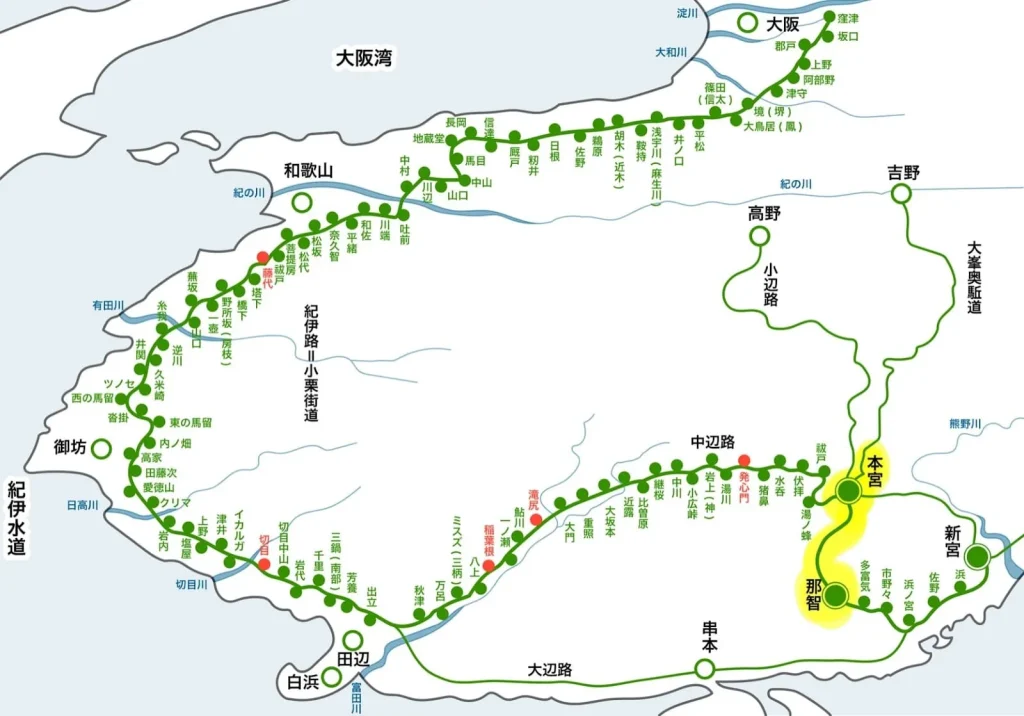
The route over the Kounodori and Oounodori crossings is recommended for advanced trekkers and those who are confident in their physical strength. This route leads from Kumano Nachi-taisha Shrine to Kumano Hongu-taisha Shrine in the Kumano Sanzan.
As the names suggest, Kogumotori-goshi and Oumotori-goshi are mountain passes that ‘cross’ the ‘clouds’. In particular, the Ogumotori-koshi pass crosses a number of 800 m high passes.
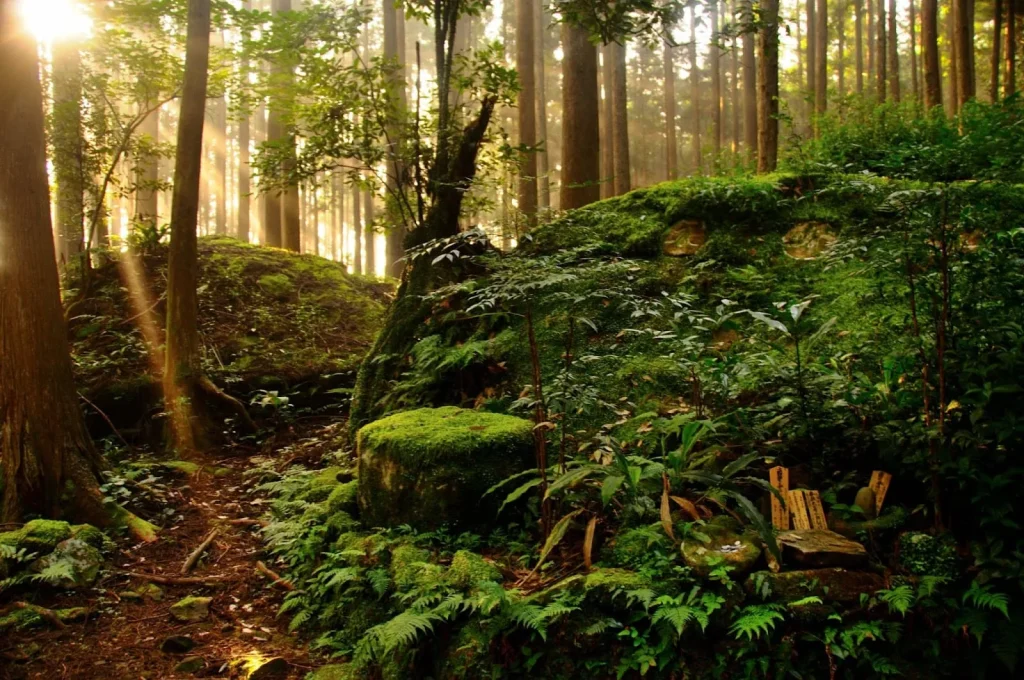
After paying homage at Kumano Nachi-taisha shrine, start your walk at Nachi Kogen Park as your starting point. Be careful, as there is a steep descent near ‘Shikogawa Tsuji’. To cross the Ishikura Pass and Echizen Pass, you will need to tackle steep ascents and descents. Once you reach Echizen Pass, take a break here.
From Echizen Pass it takes about two hours to reach ‘Oguchi’, where you will stay for the first day. There are several places to stay in Oguchi, but early booking is recommended as rooms are often booked up.
On the second day, you can try the Koyunodori Pass from Oguchi. The path is flatter than the Oundori-Koshi and you can enjoy a pleasant hike.
It takes about one hour to reach the Sakura Pass, from where there is a gradual descent, and after crossing the Hyakumagura, the path becomes a ridge path that is easy to walk on. From the bus stop, it is a 40-minute walk to the Kumano Hongu Taisha shrine, where you can take your time to visit the shrine on the second day.
Time required
Approx. 7 hours (Oyumo-taketsu) + Approx. 5.5 hours (Koyumo-taketsu)
Distance
Approx. 14.5km (Oyun-Taketsu) + Approx. 13km (Kobun-Taketsu)
Difficulty
★★★★★
For spectacular views! | TakijiriOji – ChikatsuyuOji.
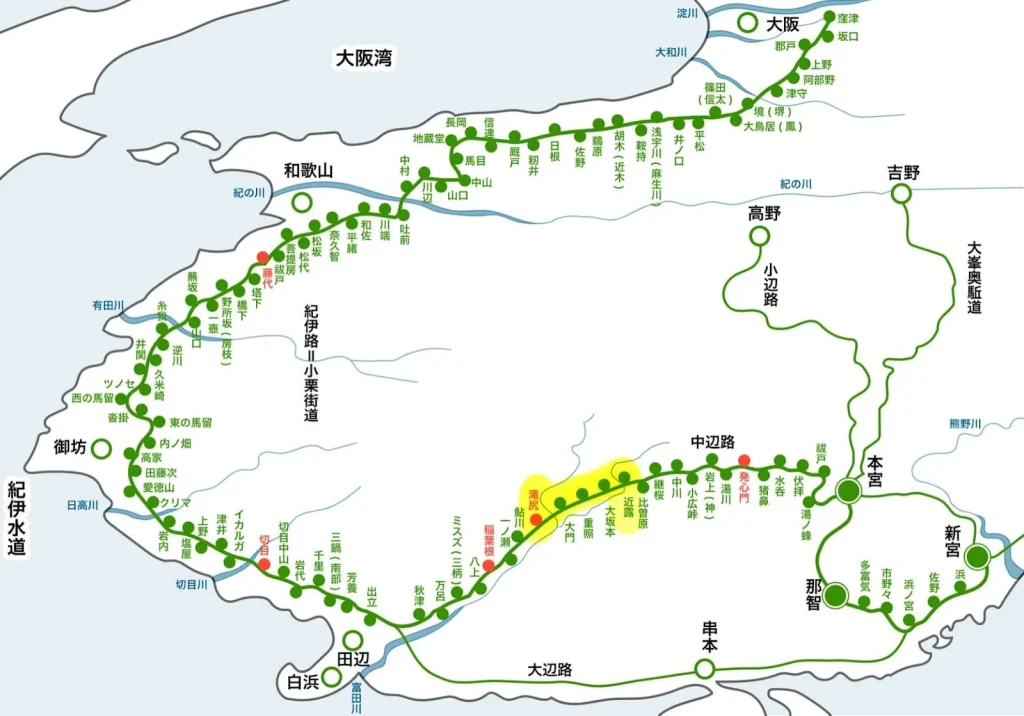
Lastly, we introduce the course ‘Takijiri Oji – Chikanro Oji’, which offers spectacular views. Here you may be able to see a sea of clouds.
Takijiri Oji Shrine, which sits at the confluence of the Tonda River and the Ishibune River, was once considered the beginning of the Kumano Sanzan sacred area. There is a steep gradient right from the start, but it’s still early on, so you’ll probably be fine. Between the steep gradients, there are four places of interest: the Tainai Kuguri, Nyumi Iwa (Milk Rock), Non-Sleep Oji and the remains of the Sutra Mound on Mt Kenozan.
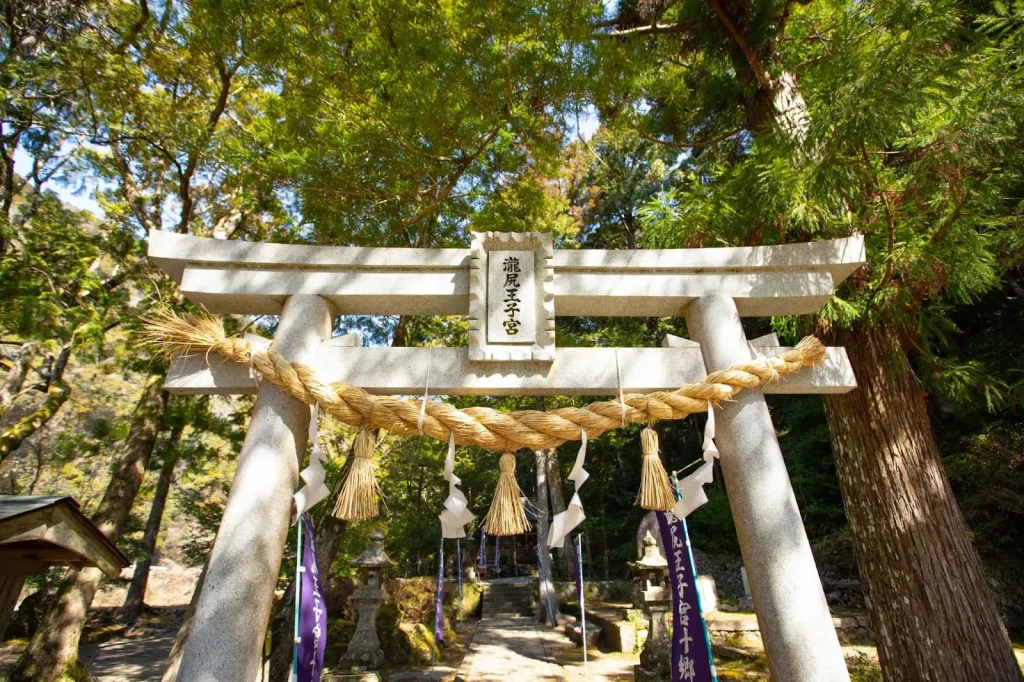
Past this point is the viewing platform, which provides the first spectacular viewpoint. Take a break and enjoy the view.
From the ruins of the Kenzan Sutra Mound, the route is flat and easy to walk along with stairs, and after less than an hour’s walk you will arrive at the Takahara Kumano Shrine. The shrine pavilions of Takahara Kumano Shrine are said to be the oldest shrine buildings in Nakahechi. There is even a record of Fujiwara no Teika stopping by. Please feel the history of the shrine.
Walk further and you will arrive at Kogenkiri-no-Sato (Highland Fog Village)! This is the cloud sea spot. The best time to visit is from autumn to winter. Aim for early morning (within an hour of sunrise) when the temperature difference between day and night is large, humidity is high and the wind is calm. Of course, you can also visit during the daytime and enjoy the spectacular view.
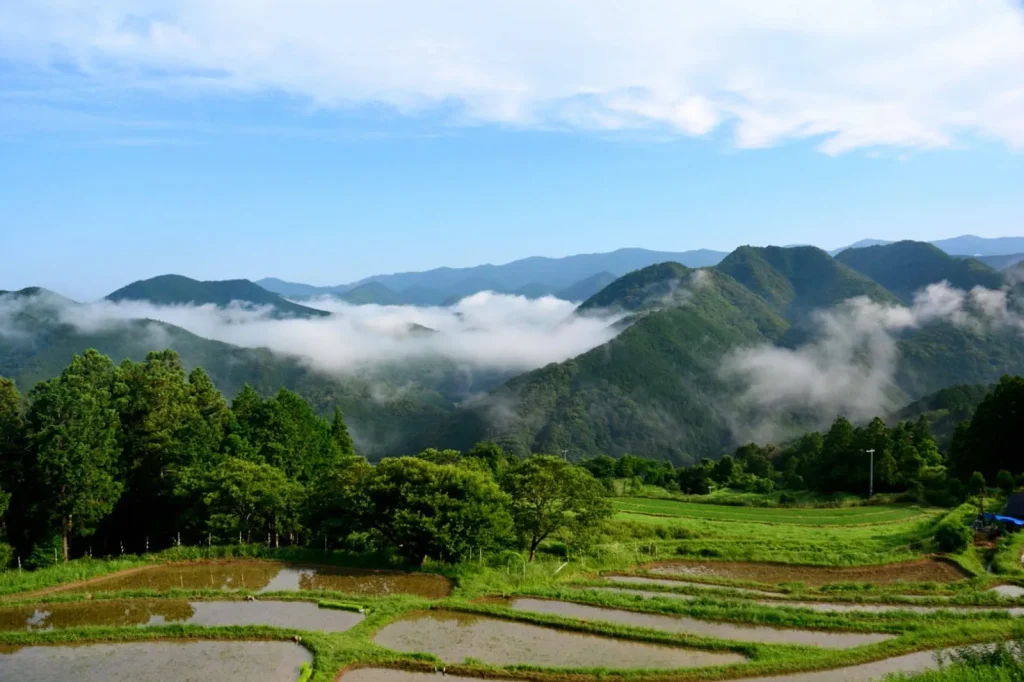
Don’t miss the spectacular viewpoints between ‘Daimon Oji’ and ‘Jujo Oji’.
From there, cross the three mountain passes of Jujo Toge, Osaka Toge and Chopstick Ori Toge, and once past Ushiba Doji, you will arrive at the Chikanro
You will arrive at the village. The Ushiba Doji is a stone statue of a monk in monk’s clothes astride an ox and a horse, and is small and cute at around 50 cm, so be careful not to miss it!
The view over the village of Chikaruro is also a lovely reminder of the original Japanese landscape. A new inn, SEN.RETREAT CHIKATSUYU opened in Chikaruro in April 2022. It is a container villa built from used containers, with a private garden and a roof-top terrace. It is also a good place to heal your body after a long day of walking.
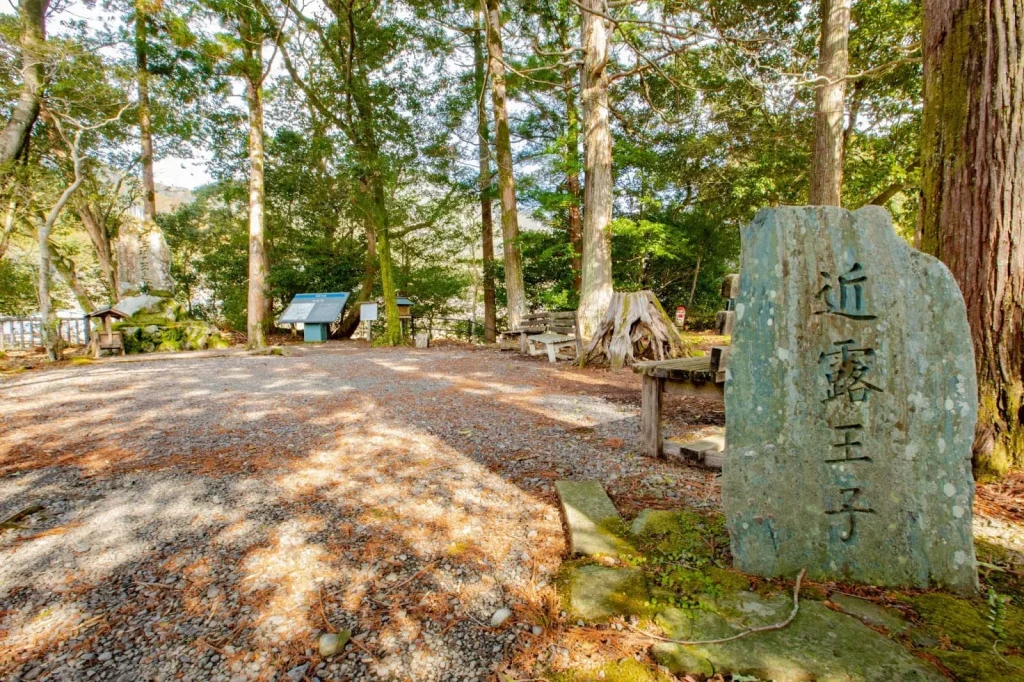
Duration.
Approx. 6.5 hours
Distance
Approx. 13 km
Difficulty level
★★★☆☆
[Extra] Recommended for beginners: a course that can be walked in three hours.
Want to visit the Kumano Kodo, but not confident in your fitness…
For you, we recommend the trekking course for beginners, where you can pick up only the best parts of the Kumano Kodo. The route is also ideal for those who have limited time for trekking and are travelling for one or two days and nights.








